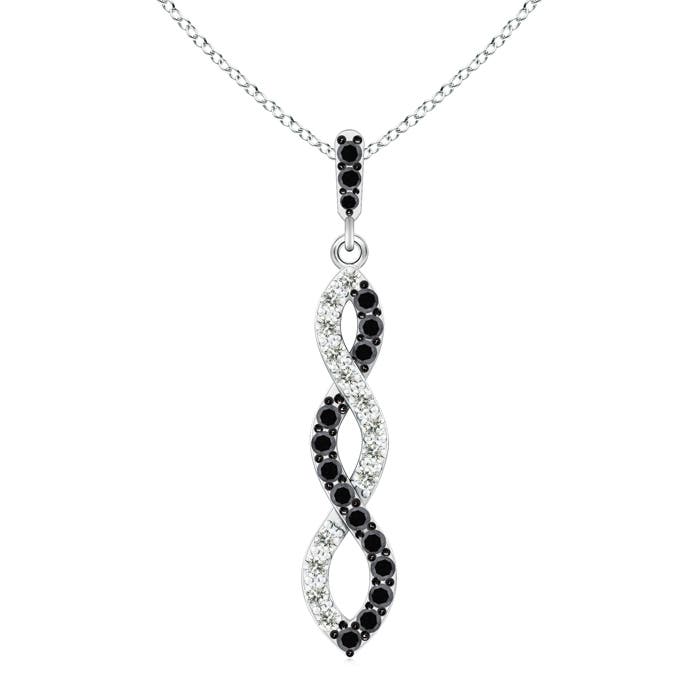If you love black diamonds then you will love the history of enhanced black diamonds even more!
Black diamonds are ranked differently from the more prevalent white or colorless diamonds. Even though colorless diamonds have retained their spot, black diamonds too have gained popularity over recent years. They are particularly appealing to people seeking enhanced black diamond engagement rings or other pieces of jewelry that are striking and distinctive.
The History of Enhanced Black Diamond
Usually, when we imagine a diamond, we picture a clear, glittering gem. Black diamonds are the polar opposite of this, so it is puzzling how they might be produced similarly. Contrary to popular belief, black diamonds’ color is pure and resembles colorless diamonds more than flashy colored diamonds.
The impurities linked to naturally colored diamonds during their formation give them their hue, like bright yellow and pink diamonds. However, black diamonds are similar to white diamonds. They include a lot of impurities, which are graphite clumps. They are so strong that they make the diamond look dark. They are extracted from riverbeds and date back up to 3.8 billion years.
Black diamonds don’t glow by the reflection of light like colorless diamonds. Instead, they take in light, which gives them a distinctive marble-like appeal. In addition, black diamonds have a different origin that partly results from their sources. Black diamonds are only found in Brazil and the Central African Republic.
The mystique surrounding black diamonds is heightened by the fact that there is no single explanation for their origin. Some geologists think radiation caused them to develop. Others have even suggested that black diamonds originated in space and were dumped on earth by a meteorite that collided with the planet millions of years ago.
The earliest black diamonds were found in Brazil, where Portuguese immigrants named them “carbonados.” The word was chosen due to the raw diamonds’ charred look. In the 19th and 20th centuries, when jewels started to be shipped overseas, jewelers weren’t always happy to receive them. However, not everyone believed they couldn’t be used as jewelry and gradually with time jewelry designers and enthusiasts realized the potential within these fine gems.
Historical Facts About Enhanced Black Diamond
Following are some interesting facts about enhanced black diamonds:
- Tens Of Millions of Crystals: Black diamonds differ from other types of diamonds in that they are composed of millions of tiny black crystals connected by internal inclusions rather than being a single, pure stone. Their color is a result of what is called a polycrystalline structure. This structure occasionally causes spots to seem dark grey.
- Tough: Though black diamonds are the toughest diamonds, most diamonds are noted for their toughness and durability. They have a Mohs hardness rating of 10, making them extremely challenging to carve and polish.
- Diamond Carbonados: Carbonados diamonds are another name for black diamonds. In the mid-18th century, the Portuguese in Brazil came up with the name carbonado, which means dense dark diamond.
- No Gleam: These black beauties don’t shine brilliantly like a diamond. Since these unique diamonds don’t reflect light but rather absorb it, their marble-like smooth surface is what gives them their brilliance.
- Benefit Or Curse?: Based on the context, black diamonds were either regarded as a blessing or a curse. Considering that it resembles a snake’s eye, Indians regarded these gemstones as a curse. On the other hand, Italians thought holding a black diamond symbolized forgiveness and would bring luck to their marriage. Nowadays, black diamonds are more often regarded as mystery gems than as a blessing or a curse.
- From Outer Space: Black diamonds are incredibly mysterious and nobody knows how they were created, which is in contrast to other diamonds, where the formation is known. Some scientists think that black diamonds were created in stellar supernova bursts in deep space and that they were brought to earth by an asteroid collision about two and four million years ago.
- Alluvial Deposits: Black diamonds are distinct from other diamonds in that they are only discovered in alluvial deposits, younger rock structures that are only found close to natural sources of water. Diamonds are discovered in kimberlites.
- Takes Time: Carving a black diamond is a very tedious and time-consuming operation that might take up to a year. It is due to the peculiar arrangement of carbon and graphite molecules in them.
Enhanced Black Diamond Properties
Strength – Black diamonds that have received color enhancement are naturally occurring diamonds. They retain their structural integrity, earning a ten on the Mohs scale of material hardness. Black diamonds with enhancements are ideal for everyday use.
Treatment – The color-enhancing procedures used nowadays are secure and efficient. The two methods used by jewelers frequently to change the color of this valuable stone are mentioned below:
Irradiation – In this procedure, a diamond is exposed to high-energy particles, which are often no larger than electrons, which causes the carbon atoms to move around. The treatment changes the stone’s physical characteristics, resulting in a shift in the gem’s hue. The diamond is then heated through a process called annealing to enable the changed atoms to reorganize themselves and take on the appropriate hue. Irradiation is a secure procedure that is carried out in a lab. The color change brought about by this procedure is long-lasting.
High-Pressure High Temperature (HPHT) – It is a treatment that, despite being carried out in a lab, perfectly imitates the natural process by which diamonds are formed beneath the earth’s crust. This process includes subjecting the diamond to extremely high temperatures and pressures, which results in a color shift. The rock is then cleaned and re-polished. This procedure can produce a multitude of colors in a diamond in only a few short hours.
Taking Care of an Enhanced Black Diamond
Black diamonds are easy to take care of and hard. However, regardless of the type of enhanced black diamond jewelry you own, it is imperative to take the same precautions with this gem as you would with a diamond or any other precious gemstone.
- Enhanced black diamonds can harm other gemstone jewelry if not kept properly. Because of this, keep each piece of diamond jewelry in a soft fabric pouch.
- As a general guideline, take off your black diamond jewelry before engaging in physical labor or home duties.
- Take a soft brush and warm, soapy water to clean your enhanced black diamond jewelry.
- The color of an enhanced black diamond is produced using a variety of techniques, most of which produce long-lasting results. When cleaning the jewelry, it’s crucial to avoid using bleach and other abrasive substances to preserve the brilliance.
- It is advised to have your black diamond jewelry cleaned and examined by an expert once every six months.
- High temperatures should be avoided since they could change the diamond’s color.
- Avoid using steam or ultrasonic treatments on this stone since they could harm it.
Conclusion
A black diamond has progressively become one of the most sought-after diamonds on the market today because of the stunning appeal it exudes. Its acceptance as a novel center stone for engagement rings is proof of this. Check out Angara’s collection of enhanced black diamond jewelry and pick the one that resonates with you or your loved one.
Also Read
- History of Blue Zircon
- History of Amethyst
- History of Aquamarine
- History of Blue Sapphire
- History of Brown Diamonds
- History of Diamond
- History of Blue Diamond
- History of Orange Zircon
- History of Pink Sapphire
- History of Pink Tourmaline
- History of Ruby
- History of Tanzanite
- History of Tourmaline
- History of Tsavorite
- History of Turquoise
- History of White Sapphire
- History of Yellow Sapphire
- History of Moonstone
- History of South Sea Pearl
- History of Tahitian Pearl
- History of Citrine
- History of London Blue Topaz
































